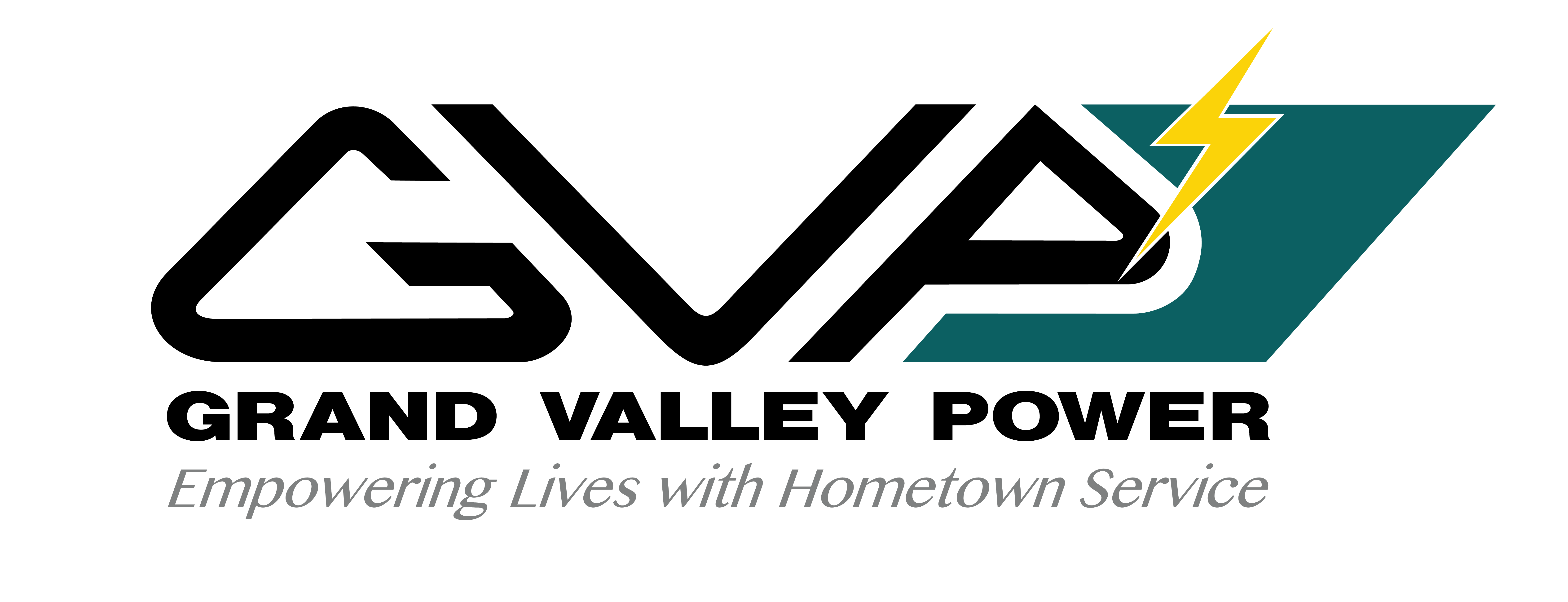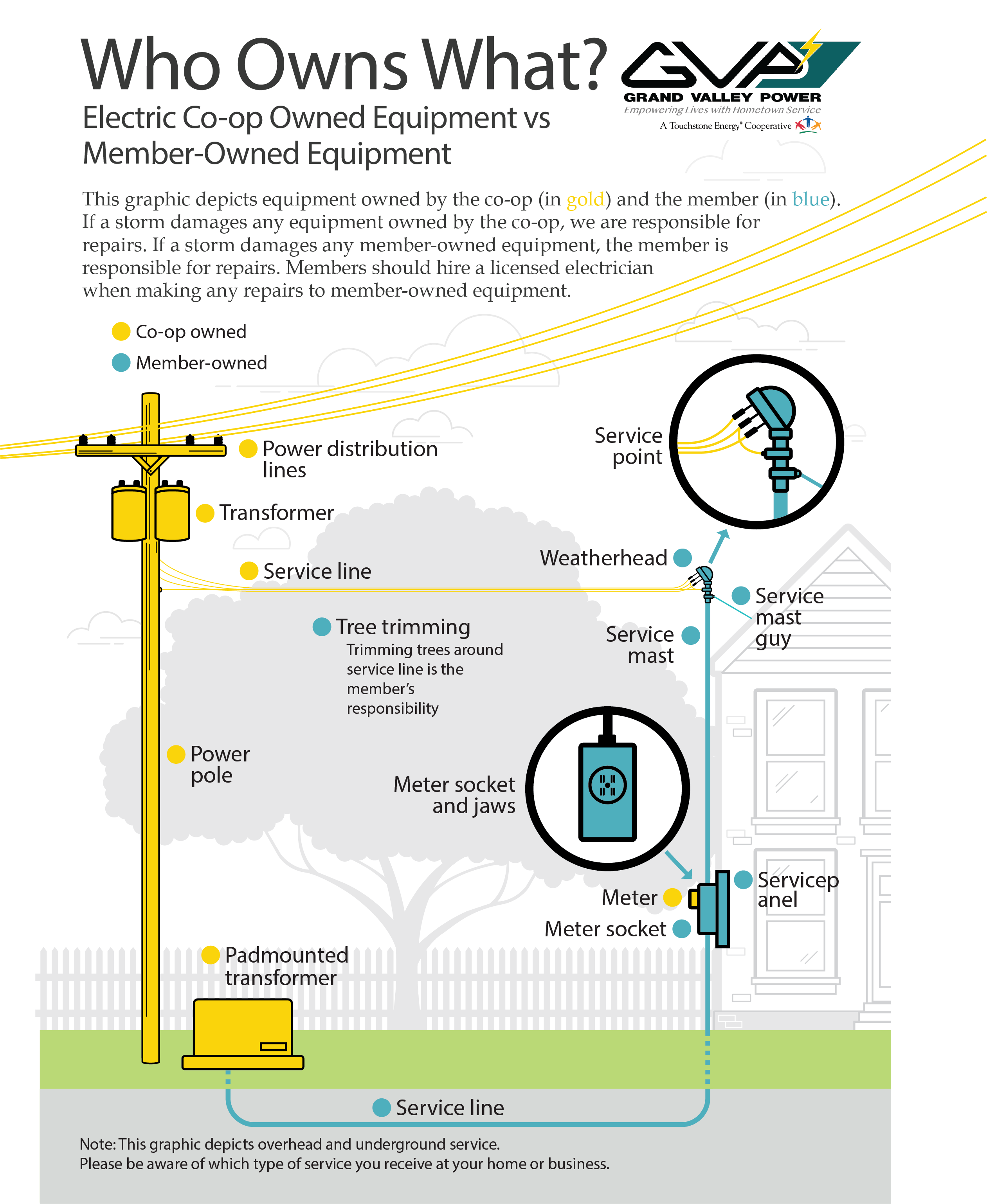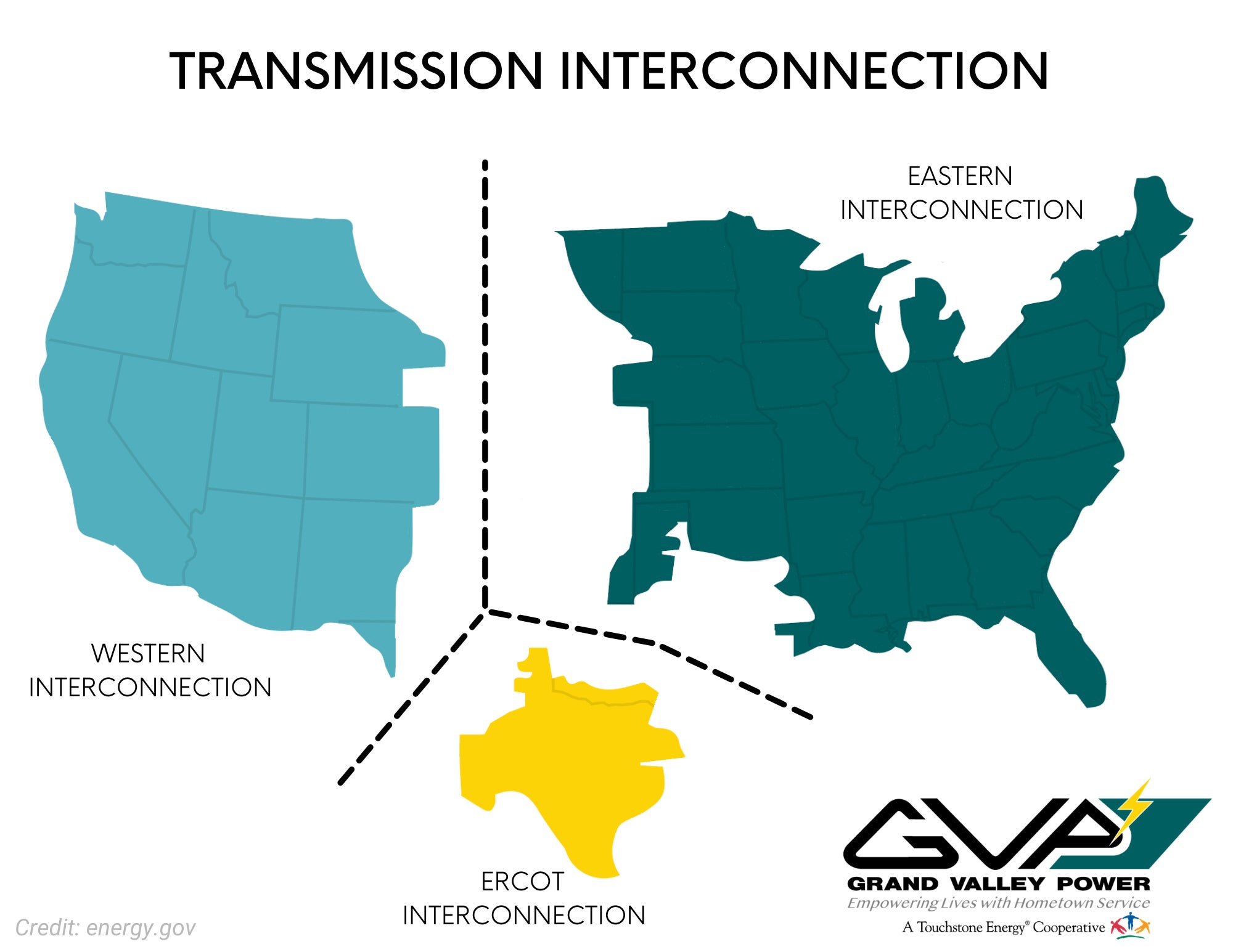Where Your Power Comes From
Grand Valley Power has a long-term contract to purchase power through Xcel Energy, our wholesale power supplier. GVP also contracts with Western Area Power Administration for a small portion of renewable energy (hydroelectricity).
In order to ensure that we have a reliable and affordable source of electricity to distribute to our consumers, about 30 years ago Grand Valley Power entered into a long-term Power Purchase Agreement with Xcel. This contract, which is approved and regulated by the Federal Energy Regulatory Commission (FERC), ensures that Grand Valley Power has a source for all of its power needs at a price that is based on the cost to produce that power. We pass this power cost through to our members directly, without mark-up, on every monthly bill.
Xcel Energy provides the energy that powers millions of homes and businesses across eight Western and Midwestern states. Headquartered in Minneapolis, the company is an industry leader in responsibly reducing carbon emissions and producing and delivering clean energy solutions from a variety of renewable sources at competitive prices.
Xcel Energy is one of the fastest growing investor-owned transmission systems with more than 20,000 miles of transmission lines and more than 1,200 substations across 10 states, serving 22,000 megawatts of customer load. They operate in three North American Electric Reliability Corporation (NERC) reliability regions (Midwest Reliability Organization, Southwest Power Pool, Western Electricity Coordinating Council). Xcel Energy has assets in two Regional Transmission Organizations (Midcontinent Independent Transmission System Operator, Southwest Power Pool). Xcel Energy has four operating companies, Northern States Power Company Minnesota, Northern States Power Company Wisconsin, Public Service Company of Colorado and Southwestern Public Service Company.
Western Area Power Administration is one of four power marketing administrations within the U.S. Department of Energy whose role is to market and transmit wholesale electricity from multi-use water projects. WAPA’s service area encompasses a 15-state region of the central and western U.S. where more than 17,000 circuit mile transmission system carries electricity from 57 hydropower plants operated by the Bureau of Reclamation, U.S. Army Corps of Engineers and the International Boundary and Water Commission. Together, these plants have an installed capacity of 10,504 megawatts. WAPA sells power at wholesale to customers such as Federal and state agencies, cities and towns, rural electric cooperatives, public utility districts, irrigation districts and Native American tribes.
How Power Reaches Your Home
Electricity makes a long journey before it reaches your home. In this video, we start at the beginning and explain how you get the power you depend on every day. The electric grid is a complex system of power plants, transmission lines, substations and distribution lines that transmit electric power from the place where it’s generated - all the way to electric co-op members at the end of the line.
Video courtesy of North Carolina’s Electric Cooperatives. Permission to edit and use was given.



